We warmly welcome Hugh Newman and Jim Vieira, authors of The Giants of Stonehenge and Ancient Britain, as our featured authors for November. In their book, Hugh and Jim explore ancient myths and archaeological findings to investigate the reality of giants existing in prehistory. Millennia old stories speak of a time when giants in both stature and intellect roamed the British Isles. Hugh and Jim have collated a range of evidence to put this legend to the test. They argue their findings add credence to the idea that ancient myths contain detailed insights about the mysteries hidden in the past.
Interact with Hugh and Jim on our AoM Forum here.
Stories of giants being involved in the construction of megalithic sites have been alive in the consciousness of the British for millennia. Legends and creation stories harken back to an earlier age of elemental beings, high magic and giant kings ruling the land. Religious documents, medieval chronicles, oral traditions and origin stories all recount converging tales of giants being an integral part of the founding of the British Isles. Giant effigies are still paraded around many cities and towns, keeping this ancient memory alive. Mystics, sages and esoteric sources all speak of giants as a literal reality, often originating in a lost sunken realm. Even Stonehenge’s creation is attributed to remarkably tall and powerful builders. These titans were not only giant in stature, but also giants in intelligence, skill and wisdom.
Collating hundreds of historical accounts of massive bones and skeletons being found in the vicinity of sites such as Stonehenge adds some credence to the idea that age-old myths encoded detailed histories and insights from many thousands of years ago. These giants were often linked with the secret arts, forgotten sciences and magic from a fabled “Golden Age.” The epic annals of Ireland, secret Scottish archives, old manuscripts of Wales and Druidic traditions of England have revealed a lost timeline, a missing chapter in human history that provides evidence of giant human beings inhabiting, ruling and building the megalithic masterworks of Albion.
The reality of giants existing in prehistoric times is put under the microscope in the new book The Giants of Stonehenge and Ancient Britain, with the investigation of obscure newspaper accounts, antiquarian diaries, archaeological reports, local history records, newly translated ancient texts, royal engineering survey data, academic papers, and written evidence from hundreds of sources going back several thousand years.
The Dragon Man, Denisovans and a slowly shifting paradigm
Before we explore the mysterious origins of Stonehenge, we’d like to point out a remarkable find that significantly strengthens the possibility of giants being a reality in prehistory. An enormous skull was found in China which has been named the ‘Dragon Man’, a description derived from the Long Jiang or Dragon River in the Heilongjiang province of China. The skull was actually found in 1933 by a farmer who hid it in a well from Japanese soldiers. He shared the location of the skull with his grandson in 2018 who brought it to Chinese scientists. While some believe it may be a new human ancestor, the consensus appears to be that it is a Denisovan skull and has been scientifically established to be at least 146,000 years old. What is remarkable is that it is the largest Homo skull ever found. Chris Stringer, a highly respected anthropologist at the Natural History Museum in London stated on the BBC website, “This is the biggest human skull I’ve seen – and I’ve seen a few.”(1) The notion that our ancestors were smaller with less cranial capacity may finally be changing, especially as Denisovan skull fragments, teeth and finger-bones have all been unearthed in Siberia and are of extraordinary size, compared to modern humans.
Were Giant Skeletons unearthed in the Greater Stonehenge Landscape?
Wiltshire contains some of the world’s most important megalithic sites, and many have giant associations at their core. Numerous ‘Giants’ Graves’ are scattered across this county as mounds, long barrows and monoliths.
Historia Regum Britanniae, (The History of the Kings of Britain) is a controversial historical account of British history written around 1136 by Geoffrey of Monmouth. It describes the most famous Arthurian tales and speaks frequently of giants. However, it is the telling of the story of the origins of Stonehenge (and the giants involved) that we will focus on here. The book explains that Merlin built a burial place for Aurelius Ambrosius, an ancient King and that the stones, originally transported by giants from Africa, were erected into a stone ring in Ireland. A long time later, they were transported to Salisbury Plain by Merlin. We now know the bluestones came from West Wales, but the book highlights that it was known for a long time that they were from the western part of Britain. The original name for Stonehenge was Chorea gigantum, (‘The Giant’s Dance’). Stonehenge is a later Saxon name that roughly translates to “The Hanging Stones”. Another traditional Welsh name for Stonehenge is Côr y Cewri or “Council of the Giants”.
The earliest illustration of Stonehenge shows two average-sized gentlemen watching a giant lift one of the lintels into place. He is estimated to be about 16 feet tall based upon the known dimensions of Stonehenge. The twelfth-century story that this image comes from is a manuscript called Le Roman de Brut by Robert Wace thought originally to be dated to around 1155 AD. (2) This is a paraphrased version of Geoffrey’s Histories. It is the earliest illustration of the stones and appears to show Merlin, King Ambrosius and a giant.

Illustration from Le Roman de Brut by poet Wace c.1155 AD showing a giant, Merlin and King Ambrosius
In Chapter Ten of Geoffrey’s Histories, King Aurelius is advised by Merlin to bring over the stones from an important megalithic site in Ireland called Killaraus. The stones were said to have been chosen for a very specific purpose, as healing stones of great sanctity. In the Histories Merlin states: “They are mystical stones and of a medicinal virtue. The giants of old brought them from the farthest coast of Africa, and placed them in Ireland, while they inhabited that country. Their design in this was to make baths in them when they should be taken with any illness. For their method was to wash the stones and put their sick into the water, which infallibly cured them…There is not a stone there which has not some healing virtue.”
The account does not mention giants in context regarding the actual construction of Stonehenge on Salisbury Plain, but the name ‘The Giant’s Dance’ remained for centuries and may have even been its given name. After the 15,000-strong army failed in dismantling and transporting the stones, Merlin stepped in and used what was described as “gears” or “engines”. Other accounts talk of the wizard utilising “Magic” and “sleight”(3) to do the job. He effortlessly got them onto boats before reconstructing them on Salisbury Plain in the exact configuration. Furthermore, in North Africa, Libya mainly, similar megalithic trilithons have been reported and photographed that look strikingly similar to Stonehenge, suggesting there was indeed a prehistoric connection between Africa and Britain, as stated in the text. Numerous legends have North Africa as a haven for the Titans, with stories stretching all the way to Morocco, where a mighty stone circle and burial mound called Msoura is thought to be that of a giant warrior god called Atlas (or Hercules).
The Salisbury Giant Discovered in a Mound, measuring 9 feet 4 inches
In A Theological, Biblical, and Ecclesiastical Dictionary by John Robinson (1830), it describes a 9ft 4in skeleton unearthed a few miles south of Stonehenge in 1719: “…near Salisbury in England, a human skeleton was found, which was nine feet four inches long.” Another source recounts a further clue as to where exactly this huge skeleton came from. It tells of a local woman remembering some details from her childhood in a local publication. The mound was a Giant’s Grave next to St Edmund’s Church. This particular church was part of the original college founded by the Bishop of Salisbury, Walter de la Wyle in 1269, and is located a few miles from Stonehenge. The earthwork is located just north of St Edmund’s Church Yard, now the Arts Centre (founded in 1975), part of the greater Stonehenge landscape. The discovery was published in many sources at the time.
Giant Skeleton near Stonehenge Reported to be 14ft 10in
Thomas Elyot (c.1490–1546) was a diplomat, scholar and Member of Parliament for Cambridgeshire. In his famous Dictionary, he states: “About 30 years since I myself, being with my father, Sir Richard Elyot, at a monastery of regular canons (three or four miles from Stonage) beheld the bones of a dead man found deep in the ground, which being joined together, was in length 13 foot and ten inches, whereof one of the teeth my father had, which was of the quantity of a great walnut.” In Journey into South Wales (1802) George Lipscomb extends the height of the giant skeleton by one foot: “…it should be remembered, that Leland, in his “Collectanea”, quotes the respectable authority of his friend, Sir Thomas Elyot, as recording, that himself had seen, at someplace, near Salisbury, a skeleton which measured fourteen feet ten inches in length.”
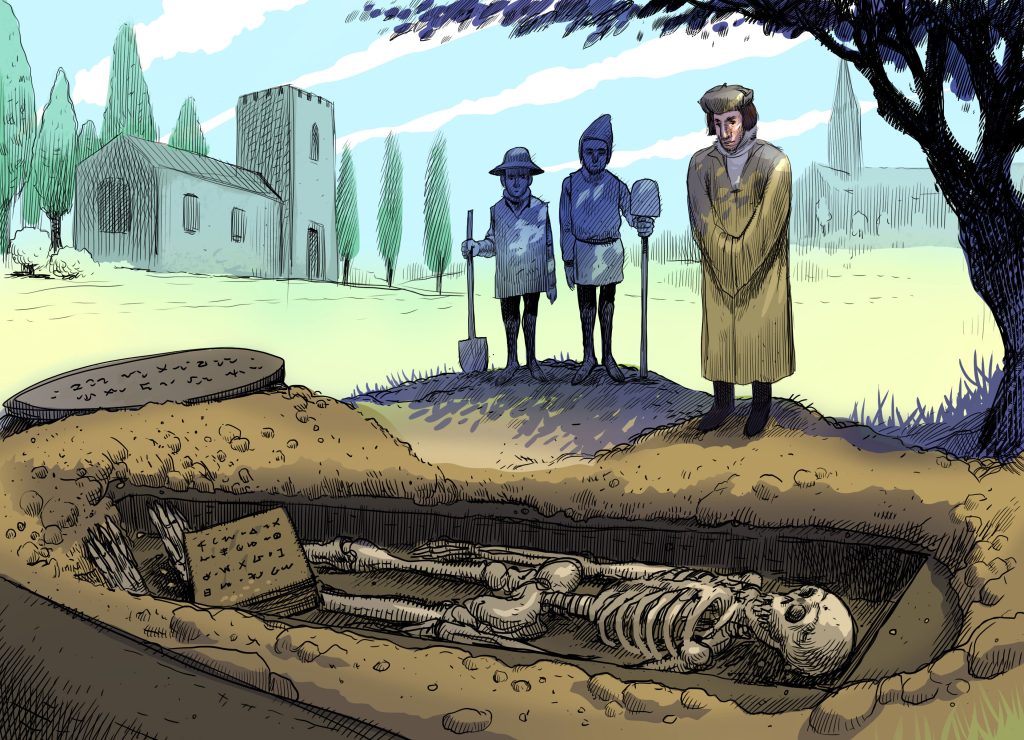
Thomas Elyot observing the giant skeleton, which was found with an ancient book with an unusual script on it. A large inscribed metal disc was found nearby. By Dan Lish.
John Leland wrote De Rebus Britannicis Collectanea in Six Volumes in 1774 and the knighted Sir Thomas Elyot was, like Leland, a respected voice of the time. William Camden evidently alludes to the same incident, though he gives a somewhat different version of it: “‘…as a tradition runneth, in our grandfather’s remembrance was found a grave and therein a corpse of twelve foot and not far of a stock of wood hollowed and the concave lined with lead with a book therein of very thick parchment all written with capital Roman letters. But it had lien so long that when the leaves were touched they fouldred to dust. Sir Thomas Elyot, who saw it, judged it to be an Historic.”(4)
We have a 13 ft 10 skeleton, also recorded as being 14 ft 10, and finally a 12 ft one as well, the final account hinting at strange inscriptions on the lead interior. Many different heights are mentioned, but one thing is agreed upon, this was a seriously big skeleton. The log coffin in the final account is very similar to the one described in Glastonbury Abbey, as discovered in the 1100s (see the book for the full account). Another fact also mentioned by Camden, in speaking of Stonehenge, points to Elyot’s familiarity with this part of Wiltshire and a fascinating artefact that is now lost. “I have heard that in the time of King Henry the Eight there was found near this place a table of metal as it had been tin and lead commixt, inscribed with many letters but in so strange a character that neither Sir Thomas Elyot nor Master Lilye, Schoole-maister of Paules, could read it, and therefore neglected it. Had it been preserved, somewhat happily might have been discovered as concerning Stonehenge which now lieth obscured.”(5) The description of a “table” of metal and a mixture of “tin and lead” could be connected to the 12 ft version of the giant account with the mention of the inscribed lead. Whatever it was, and what was written on it, will never be known.
The New Salisbury Giant and the Canaanite Connection
Curiously, in Salisbury, a giant still resides but in a different form. Not skin and bone, but made of textiles and paper mache! Both the Salisbury Giant and Hob-Nob (a hobby horse) were pageant figures created by the Salisbury guild of Merchant Tailors in 1447. The Giant was first recorded in 1496 and even met King Henry VII and his Queen, who were staying at nearby Clarendon Palace. Many similar ‘giants’ and other Pagan models were destroyed during the reformation, but this one survived, being paraded around Salisbury every year on St John The Baptist’s Day, 24th June. Clearly, this is connected with the Summer Solstice celebrated at Stonehenge, and proves how this tradition survived until recent years. The giant and his minions would parade through the city streets accompanied by great crowds with music and singing, with the heavy thud of a bass drum representing the giant’s footsteps. Hob-Nob always accompanied him, preceding the giant, clearing the path for him so that he did not topple onto the crowds. The pageant had an unsettling and arcane atmosphere, harking back to Pagan times.
From 1746 onwards all the giant’s outings were on days of national celebration. The giant was recorded as being a massive 25 feet tall. In 1784 the giant became known as St Christopher for the first time. In recent times the giant has taken part in celebrations for St George’s Day (23rd April) that includes an elaborate reenactment of St George valiantly slaying a dragon. In 2012 the giant made its last appearance on the streets of Salisbury due to a moth infestation in his garments. He has since been retired and is on permanent display in the Museum.
Who really was St. Christopher? According to legends of his life, he was first named ‘Reprobus’ and was a Canaanite from the Bible Lands. He stood at 5 cubits (7.5 feet /2.3m) tall and was said to have a fearsome look about him. He served under the King of Canaan, but felt this wasn’t his true calling and chose to serve “the greatest king there was”. This, of course, was Jesus who, as an infant, was famously carried across a river by the saint.
As we dug deeper we found more information on the enigmatic St Christopher, this example from 1876 stated, “This Saint is generally represented as of a gigantic stature.”(6) In The Golden Legend, Jacques de Voragine described St. Christopher, “He was of gigantic stature, had a terrifying mien, was twelve coudees tall.” A coudee is an ancient measurement of about the distance from the elbow to the end of the middle finger, often referred to as a cubit. The cubit is usually between 18 and 21 inches long. By these calculations, St. Christopher must have stood from eighteen to twenty-one feet tall. He was also described as having a terrible and fearful voice and countenance.
A Canaanite giant? In Salisbury? When the authors realised that a giant who was a Canaanite from the Bible lands had been paraded around the nearest city to Stonehenge for hundreds of years, the reality of the association of giants to the great circle suddenly made sense. Why would a secret brotherhood want to maintain this tradition for so long? Had the founders hidden some secret knowledge lost to us in the modern era? It seems they were holding on to this pageant because it encoded certain truths as to the origins of their beloved Stonehenge. Furthermore, the biblical connection cannot go unnoticed and this link with earlier foreign giants might begin to explain other obscure stories regarding the builders of Stonehenge.
Did the ‘Cangick Giants’ build Stonehenge?
Five hundred years after Geoffrey’s Histories, and two hundred years after the Salisbury Giant began being paraded in Wiltshire, Rev. Robert Gay authored A Fool’s Bolt Soon Shot at Stonehenge (1666), about a ferocious prehistoric culture of giant warriors whose earliest incarnations were as semi-divine beings. The Cangi were traditionally the builders of Stonehenge, and although they were based in Somerset, their territory reached Wiltshire. The antiquarian views of Gay did not take hold in the British imagination, but how did these particular giants become known as the builders of Stonehenge?
The story gives an interesting history of a powerful group of warrior giants defeating invading armies, who celebrated by building the great stone ring. Gay wrote: “some huge bones of men, found amongst others, in the said burrows, as aforesaid, and in other places near Stonehenge.” Moreover, he stated: “The Cangick Giants having conquered, triumphed over their enemies…they thought it was expedient to erect this Monument, as their ‘Trophie’. That monument was Stonehenge.”
The origins of the Cangick Giants were not orthodox, with two types of colossi described. One group were called ‘Giants of Antiquity’ who “had not been borne into the world by the way of all flesh. For they being heathens, and not believing any creation, supposed (to be) the first inhabitants of any nation, were bought forth by the earth…Gigantes.” This may be a reference to the Nephilim of the Bible, as he made further connections to the Canaanites, not only in name (Canaan = Cangi), or the fact that both had traditions of sacrificing their victims, but also descriptions of skeletal remains that were reported upon at the time. Stenages (the tribal leader of the Cangi), was thought to be one of ten “principal commanders” of the tribe, all thought to be of giant stature. Noted author William Camden, in his Britannia (1772) stated that the Canaanites of the Bible also appointed ten commanders in their army. Were the Cangi also the inspiration for the creation of the Canaanite giant effigy of St Christopher in Salisbury?
The Cangi, according to Gay, had metallurgy skills and actually softened, powdered, super-heated and moulded the stones of Stonehenge using “engines.” This hints at advanced technology that may have been inspired by Merlin having used ‘gears’ or ‘engines’ in moving the sarsens from Killarus in Ireland to Salisbury Plain. The softening and manipulation of stone raise an interesting point because over the last two decades Joseph Davidovits, a French materials scientist has been pioneering the theory that many megalithic sites were not constructed, but rather ‘moulded’ using powdered stone. He claims to have proven that the blocks of the Great Pyramid in Egypt were created in this way with what he calls geopolymer cement. (7) It may also indicate why the mighty sarsens of Stonehenge have what look like ‘scoop’ marks on them as though the stone had been softened then carved before they hardened. This ‘scooping’ technique is also found in Machu Picchu and Ollantaytambo in Peru, and in Aswan Quarry in Egypt.

Striations on two of the stones at Stonehenge (three images top) resemble those from Machu Picchu in Peru (lower left) and Aswan Quarry in Egypt (lower right).
The Reality of Giants
Whether in myth, legend, historical documents, massive effigies, or huge bones and skeletons being unearthed, the connection of giants to Stonehenge has been pressed upon the consciousness of this part of Britain for generations. Now, with all the information resurfacing, the age-old legends and myths may prove the famous stone circle had unorthodox origins, quite possibly built by the hands of giants.
The idea of giants having some form of historical reality has largely been regarded as anti-scientific, mythological, naïve and even worse. However, the same can be said for ideas about an ancient cataclysm which now has been scientifically verified in the Younger Dryas boundary event. Also, sites like Göbekli Tepe and Karahan Tepe as well as massive new discoveries in the same area of southern Turkey are proving civilisation is much older and more sophisticated than previously imagined. The point is that science should give more weight to mythology, folklore and oral tradition. Of course, that has to be married to the scientific proof that is needed to validate a hypothesis. We may be entering a time where the subject of giants may become less of a mocked and dismissed idea and more of an accepted reality. After all, the late Pleistocene was a time of mega-fauna and mega-flora, and just maybe, mega-sized humans.
Join Hugh and Jim at the Origins Conference Online where they will be presenting and launching the book. Details here: http://www.megalithomania.co.uk/origins2021.html, and at the official book launch at Avebury Henge Shop, Wiltshire on November 13th. Details here: http://www.megalithomania.co.uk/giantsofbritain.html
References:
1. https://www.bbc.com/news/science-environment-57432104
2. www.liverpooluniversitypress.co.uk/ books/isbn/9780859897341/
3. Samuel Danyel, Stonehenge: A Poem, 1624
4. Rev. Robert Gay, A Fool’s Bolt Soon Shot at Stonehenge, 1725, in Rodney Legg, Stonehenge Antiquities, Dorset Publishing, 1986
5. The boke named The gouernour deuised by Sir Thomas Elyot, knight; Originally published in 1531. Edited in 1883
6. St. Christopher, Martyr, by Father Francis Xavier Weninger, 1876
7. www.geopolymer.org/archaeology/.
BOOKS – AMAZON:
By Hugh and Jim:
GIANTS ON RECORD
https://www.amazon.co.uk/Giants-Record-Americas-History-Smithsonian/dp/0956786510
https://www.amazon.com/Giants-Record-Americas-History-Smithsonian/dp/0956786510
By Hugh:
STONE CIRCLES
https://www.amazon.co.uk/Stone-Circles-Wooden-Books-Newman/dp/1635573041/
https://www.amazon.com/Stone-Circles-Wooden-Books-Newman/dp/190426395X/
EARTH GRIDS
https://www.amazon.co.uk/Earth-Grids-Secret-Patterns-Sacred/dp/190426364X
https://www.amazon.com/Earth-Grids-Hugh-Newman/dp/190426364X
MEGALITH: STUDIES IN STONE
https://www.amazon.co.uk/gp/product/1907155279
https://www.amazon.com/Megalith-Studies-Stone-Hugh-Newman/dp/1907155279
GEOMANCY
https://www.amazon.co.uk/Geomancy-Divination-Dowsing-Dragons-Wooden/dp/1907155325/
https://www.amazon.com/Geomancy-Divination-Dowsing-Dragons-Wooden/dp/1952178304/






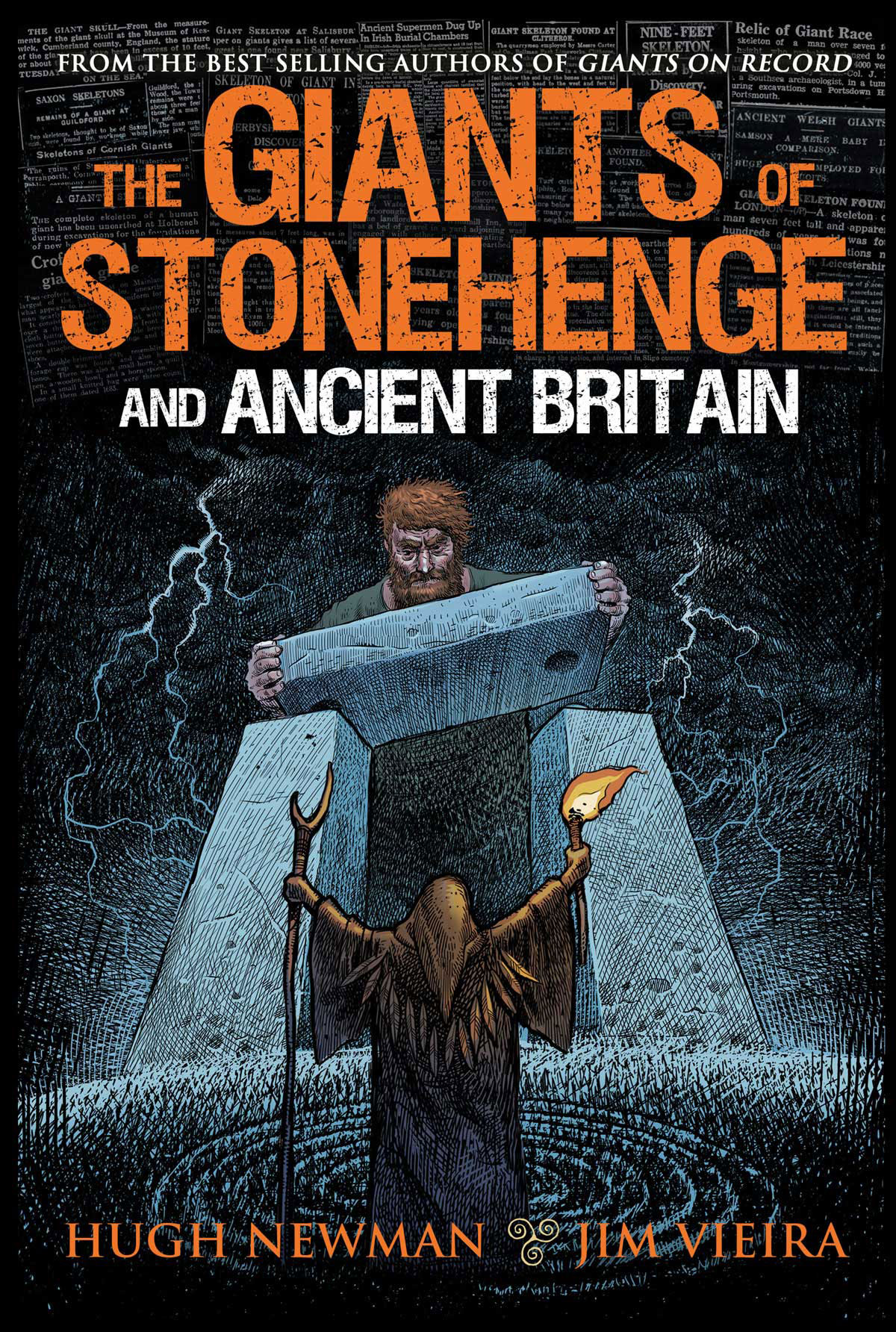



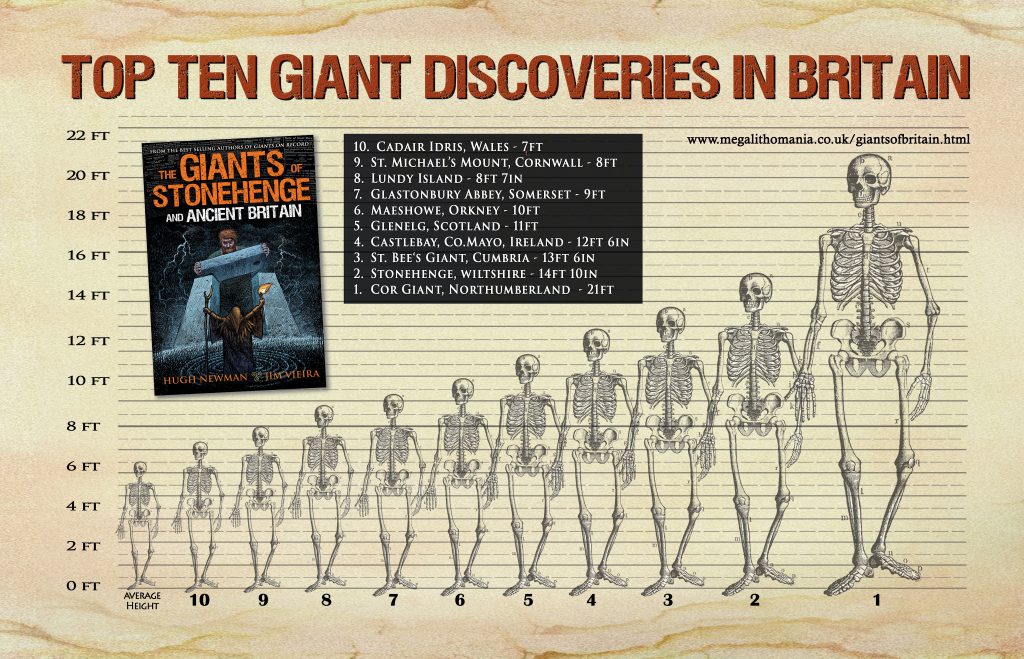
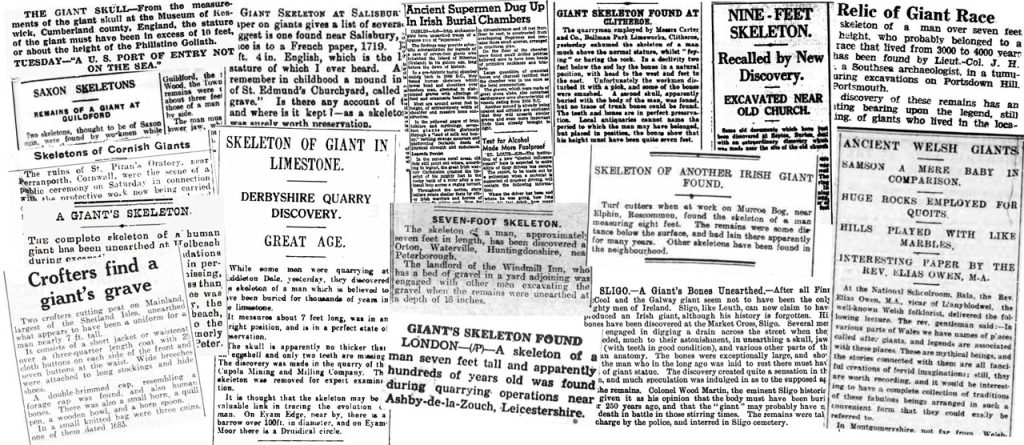
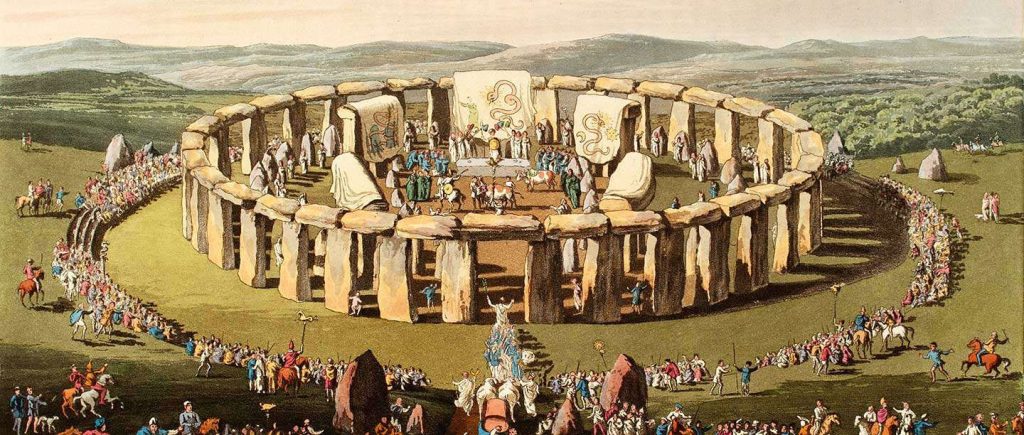
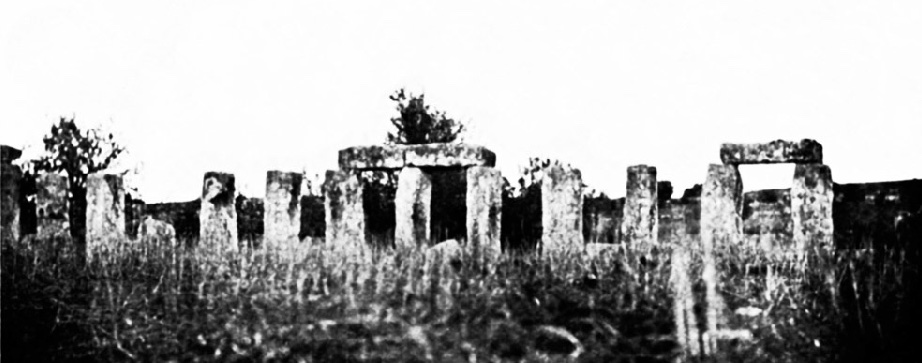
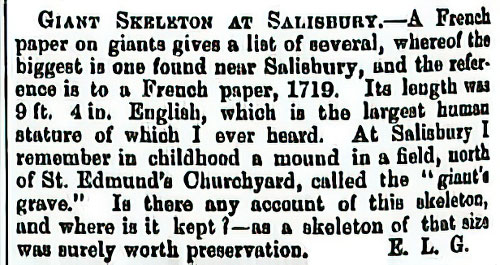
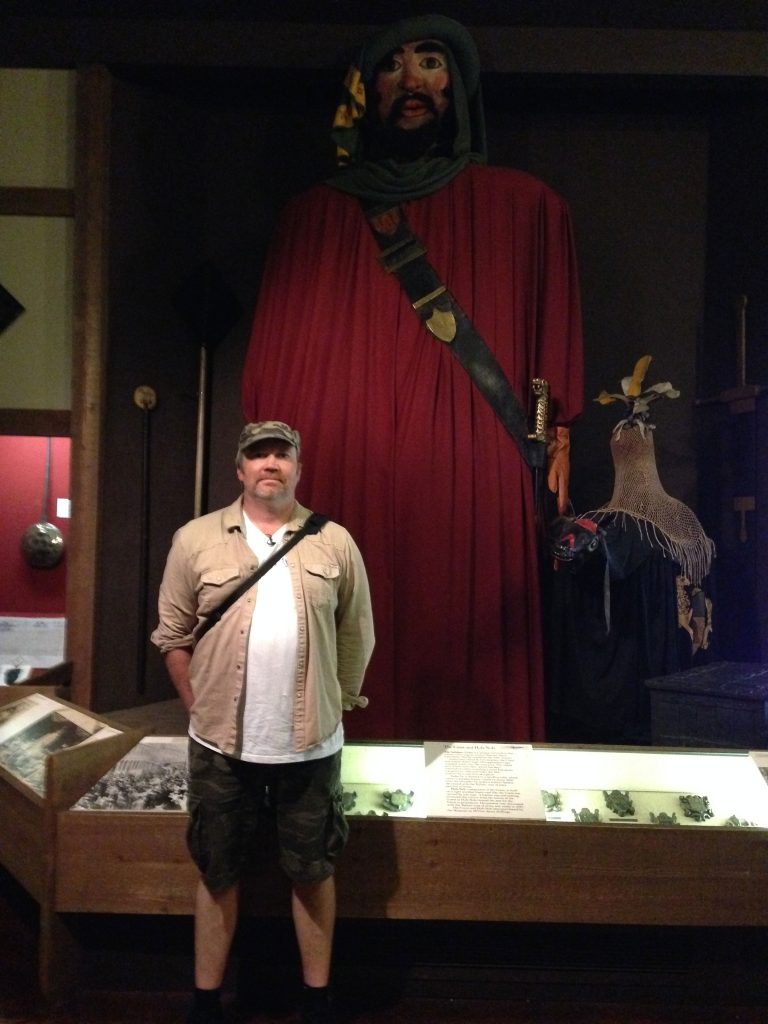

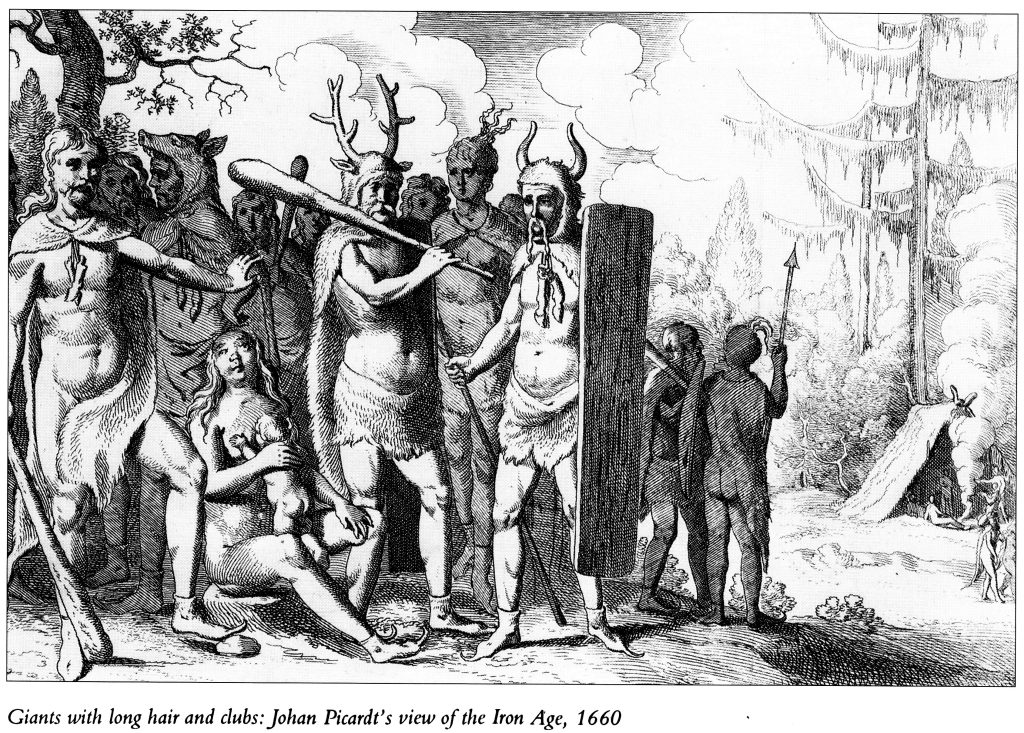
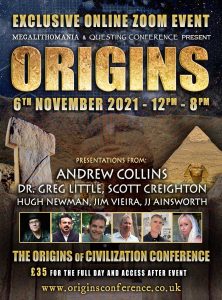
I have difficulty believing in this theory of giants. Perhaps, humans can grow tall, but there are limits since volume scales with the third power of height. Pure affine growth is limited. At some point, you have to adjust the body structure, otherwise the human is still tall but a cripple Moreover, no matter how large one chooses these giants, this does not explain the transportation and construction of megalithic structures. The bones and the entire skeleton are too fragile to lift such loads.
Aloys Ealing,
What about dinosaurs? There are problems of body size, posture, anatomy and huge mass for the largest land dwelling species and means of flight when it comes to the largest pterasaurs. The African Elephant and the Condor are supposedly at the limits of feasibility for land dwelling and flight according to modern physics.
Hello Mark,
Your argument sounds simple but has a flaw.
Humans’ upright gait on two legs allows only for a certain size. Given the stature, humans can’t significantly exceed a tallness of about two meters. By his blueprintHe he is simply not designed for more. If he would grow taller he would lack stability and topple over. More importantly his cardiovascular system would not function anymore but become overloaded, if he became ecessively tall.
Aloys: Gigantopithecus was huge in the middle pleistocene. Are you suggesting the only reason apes can be giant and humans can’t is because of walking upright? We actually have proof of this giant ape and no one has made any effort to suppress that fact. I’d be interested to hear how you parse these two claims into fact and fiction.
Hello Open Mind: Gigantopithecus didn’t look like a human. I say that with giant growth, shape, bone structure, and organs must change. An affine enlargement (everything becomes bigger by the same factor) does not work. The upright gait complicates an enlargement further.
Hi Aloys
Fair enough if you’re talking about 24ft tall, but we have people basically 9ft tall in the modern era
https://en.m.wikipedia.org/wiki/List_of_tallest_people
And the people listed are obviously sapiens sapiens. 9ft is outlandishly tall, more than a third taller than the average modern Caucasian. Bearing in mind the writers’ first point about the denisovan skull from China being the largest seen by a British professor, don’t you think that our genetically different ancestors (who we keep discovering were our contemporaries for longer and longer) could have reached heights above 9ft?
Hi Folks,
I enjoyed this article however I am struggling to find anywhere which gives an indication on the height that this person would of been. It would be interesting to know. I am assuming that with a skull much larger then ours, this person would of been well built and taller. I know that sometimes we refer to the Great Kahli as an example of what a typical Denisovan might of looked like. Would the Dragon Skull suggest something like this do you think?
“They are not considered proper gods, but they are often presented as their messengers or attendants.
‘The evil gods (or: the Seven), messengers of their Lord Anu (UH XVI, 12, 35, 41)
They walk on the right side of Adad (the storm god) (UH XVI, 19)
They are throne bearers of gods (UH V, 158)’
Furthermore, their creation is commonly functional and secondary in time. The best example is that of the Lamaštu/Pāšittu at the end of the Atra-ḫasī composition. The first form of humanity, which was created with no limits at all, that is, death, illnesses and so on, had increased so much that «the god got disturbed with (the people) uproar» (Atra-ḫasī sI 355).
On account of this, the god Enlil, deprived of his sleep, decides to destroy humanity with the Deluge.
Afterward, the gods proceed with the creation of a second form of humanity, but this time they establish a series of measures so as to limit the growth of the population. One of these measures is the creation of the Pāšittu in order to control the number of births.
(Let there be women who bear and women who do not bear) let there be a/the Pāšittu among the people, let her snatch the baby from the child bearer’s lap (Atra-ḫasī sIII vii 3-5)
From a cultic point of view, demons have no temples and they receive no worship or sacrifices; their involvement in rituals, especially in those related to healing, is instrumental apotropaically. All these elements point to their position being lower than that of the proper gods in the hierarchical structure of the Mesopotamian religion and thus arises the question about their nature.”
https://www.academia.edu/2071401/Their_Divinity_is_Different_their_Nature_is_Distinct_Origin_and_Features_of_Demons_in_Mesopotamian_Cultures
Him, then, the Gods made neither a delver nor a ploughman,
Nor in any other way wise; he failed every art.
as quoted by Aristotle
He knew many things, but he knew them badly …
as quoted by Plato
There came to Colophon an old man and divine singer,
a servant of the Muses and of far-shooting Apollo.
In his dear hands he held a sweet-toned lyre …
as quoted by Atilius Fortunatianus
The fox knows many a wile;
but the hedgehog’s one trick can beat them all.
– as quoted by Zenobius (attributed simply to “Homer”)
To hopefully address some of the comments I would point to theories which speak of a time when the atmospheric conditions on earth where such that creatures and theoretically humans could grow to a greater size, then some Velikovsyish cataclysm disrupted the environment to create the conditions we have today. Megafauna certainly is an intriguing argument for the possibility of extra-large humans as well as Gigantopithecus, maybe these are examples of what could have possibly existed in human form in the past. Honestly all the traditions written and oral around the world attribute the creation of giants with the supernatural or as by-products of some form of genetic intervention. The answers may not be fully found within the parameters of natural evolution which may be troubling for some, which the authors understand. Our goal is to lay out all the myth, lore and historical documentation so the reader can decide for themselves. We certainly believe that there is a story here that has multiple complex levels but it is good to point to potential flaws in the theory and be open to new interpretations as well.
Hello Jim,
These are exactly my thoughts. I think the existence of such large fauna and flora in the past can only be attributed to a different environment which would also logically allow for a larger ‘human’ form. Myths and legends tell of ages when great changes, new creations, cataclysmic events came about because of great environmental changes. These events brought about great evolutionary adaptations both physical by forced adaption and maybe psychological for better or worse?
The constant state of planet Earth and the solar system has to be questioned as Mr. Hancock has. His evidence cannot really be argued with and it also ties in with mythology and sacred texts.
Look forward to reading your book, keep up the good work.
thanks Mark, I am a fan of Velikovsky, Hamlet’s Mill, David Talbot and other like mind sources. There are clues everywhere hidden in plain sight like Great Salt Lake. I really don’t think any of these ideas is unscientific by any stretch, if you watch 10 hours of Randall Carlson and conclude that there isn’t a story there then I think you are being a pseudo-skeptic. As far as giants is concerned I do believe there is truth in the legends but understandably the general public will not be swayed until a 10 foot skeleton were found and dna tested which I get. Thanks for the insights, much appreciated.
Aloha. We are touching compounded enigmas. By Googling Amazon, Ancient Giants in America, numerous books, with photos and archeological records of literally hundreds of gigantic human skeletons, can be easily found. Hence, we are dealing with the global, past presence of huge humans. Second to the discovery in the 18th through early 20th century of these remains, primarily in Indian mounds, is the question of what happened when many of these reports were forwarded to the Smithsonian Institute, where there is next to no record of them. Thirdly, relative to Dr. Joseph Davidovits of the Geopolymer Institute, Googling: “Geopolymers in South American Monuments: Two Scientific Papers Published,” will open an astounding doorway to truly fascinating understandings of ancient scientific knowledge and practice. Dr. Davidovits has presented detailed, historically traceable information showing how the Peruvians combined ground rock with plant extracts to produce concretions unidentifiable from original stone. As with the disappearance of materials somehow lost in the Smithsonian, there is great reluctance by archeologists to accept Davidovits’ work. Why? Giants and poured stone structures spread across the world is a profound mystery begging to be extensively examined.
Dear Jim and Hugh,
I have only recently discovered your work, via Hancock’s website. Truly awesome, inspiring and timely. Thanks to Graham for showcasing it. For now – I wanted to share a notion with you as it was not mentioned in any of the videos I have watched so far.
Jim mentions the I Ching in context of Fuxi, the fishy primarch of China. Whilst looking at the diagrams, it struck me that I Ching hexagrams (and the trigrams that comprise them) can be seen as blueprints for “elementary” stonework components? . You can see each trigram or hexagram as a dolmen or cairn, or well, or other kind of stone construction.
Considering Chinese focus on geomancy, as well, who knows? Certainly to me a very tempting thought on various levels.
Have you had any similar notions or are there any further links I wonder?
In the meantime – keep waking the sleeping giants! We need them 😀
Best wishes,
Andrew
I’m from Ireland and live in England at the moment, and I had never heard of any ancient giants before, or even that skeletons had been found in the past, until I saw this book in Phenomena Magazine. However, I have a true story of actually seeing one..it was maybe 5-7 years ago on a trip to Ireland, not sure of the year exactly.
A friend of mine and myself saw what looked like a giant walking across the motorway in Ireland after a visit to Tara. We were heading south after coming down from a visit to the hill of Tara in County Meath, Ireland.
We both saw the man, the giant, clearly a man who was really tall about 200 meters ahead of us as we were driving back to Dublin…and it was huge, beyond normal height maybe at least 10 feet it was hard to say exactly and it moved very slowly with his head bowed, very slim and took no notice of us….I was driving and as he was moving so slowly that was the strangest thing I thought it was somebody crossing the motorway so I readied to brake as i was doing about 70 MPH, but as I approached him in the car and “the giant” just got to the central reservation of the motorway (which was a large hedge), it just disappeared. My friend in the passenger seat was seeing it and he said “be careful” as we approached it, and we both saw the same thing at the same time and described the features of the person exactly.
The strangeness about the man or being was the way he moved, very slowly and heavy not fast at all, and he had long black hair with a top which went to knee length but he had something under that as I could not see flesh, it was not a cape but some sort of top…i can still see the image to this day but the colour was not apparent. The weather was clear and it was daylight. Tara is a very spiritual place and we visited the stone of destiny just beforehand, the stone is called “Lis na Fail”.
So, that’s what I saw…both of us.
Regards,
Karl.
There is noticeably a lot to identify about this. I assume you made some nice points in features also.
Has anyone watched the True Legends films of Gensix productions?
https://www.gensix.com/true-legends-films/
Very compelling evidence